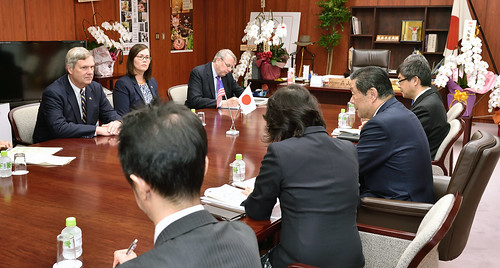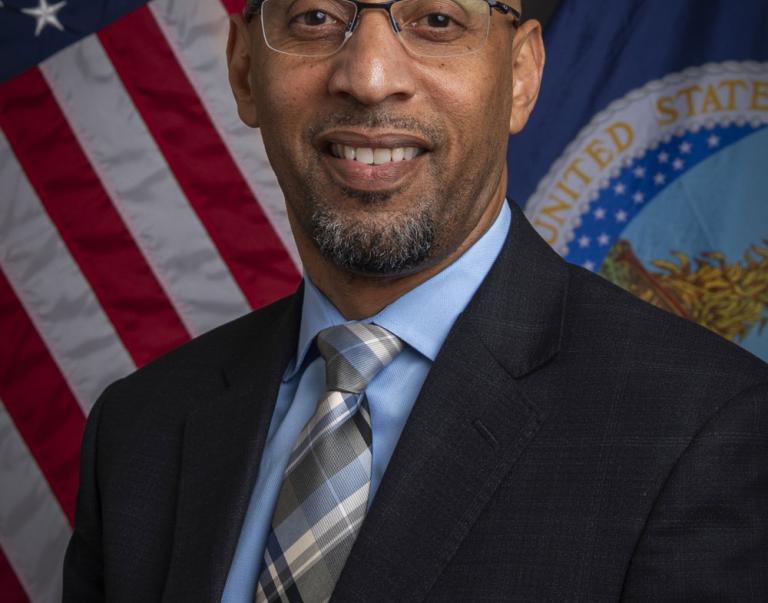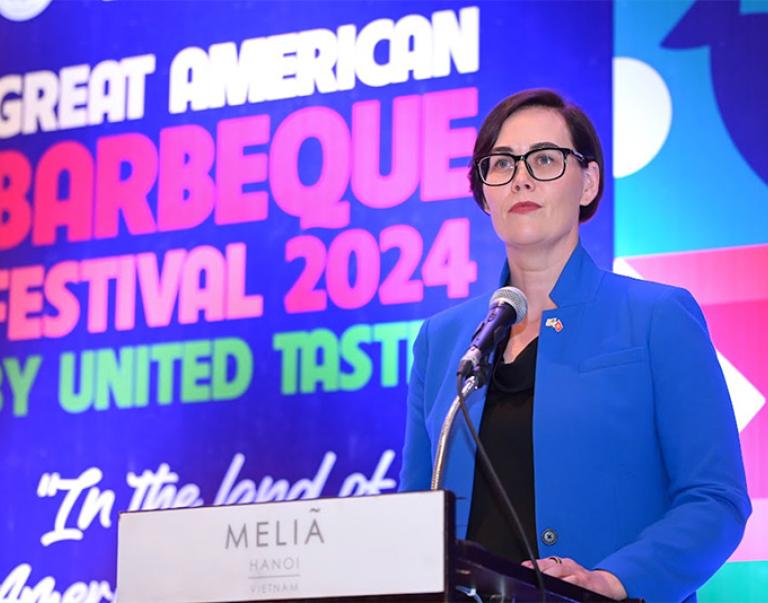
When I reflect on USDA’s international work over the past seven years, I don’t just see a great record of accomplishments, I see the building of a strong foundation that positions rural Americans to compete, grow and thrive in the years ahead.
Today, we’re launching the sixth chapter of USDA Results, which tells the story of our efforts, and our impact, alongside our partners over the last seven years to open new export markets, improve trade and capacity building, and empower future trading partners striving to build their own economies.
Trade represents 20% of U.S. farm income - roughly the amount of profit margin across U.S. agriculture. Trade agreements open new markets, helping American producers succeed even in challenging economic times, while promoting agricultural diversification. Ratifying the Trans-Pacific Partnership (TPP) agreement will boost annual net farm income in the United States by $4.4 billion according to American Farm Bureau estimates. But what does $4 billion really mean to farm and ranch families and the communities they live in? Every $1 of agricultural exports stimulates another $1.27 in business activity, creating a positive ripple affect across the country that leads to more demand for U.S. agriculture, increased job opportunities, expanding rural communities, and more.
I’ve seen this on my own family farm back in Holy Cross, Iowa. In good years my dad would re-invest profits back into the farm in the form of additional conservation measures, improved seed technology, and farm equipment. These investments made a big impact on our farm’s productivity and multiplied by many more farms like ours, those investments rippled through the rest of the agricultural supply chain.
We see this across the agricultural sectors as well. USDA established equivalence arrangements with Canada, the European Union, Japan, Korea and Switzerland, helped organic product sales grow by more than 78% between 2009 and 2015, thanks to streamlined access for farmers to international organic markets valued at over $35 billion.
Our capacity building efforts with other countries, such as Vietnam, have also led to strong trade relationships. Over the last three years, USDA’s Cochran Fellows from Vietnam have sourced more than $20 million in U.S. feed ingredients, through immediate sales following their U.S. training. Ms. Thi Hoang Hoa Nguyen attended the Cochran Fellowship Program on Grain and Feed Procurement in 2014 which focused on best practices for grain procurement and marketing and how the US regulatory system and grain grading systems worked. Upon her return to Vietnam, from October 2014 to October 2015, her company purchased over $9 million in animal feeds from U.S. farmers.
USDA’s work to assist developing nations in achieving their own food security as well as a stable agricultural economy bolsters long term diplomatic relationships. Our support, by way of the Food for Progress Program, helps developing countries and emerging democracies modernize and strengthen their agricultural sectors. I had the opportunity to visit one of these projects last year in Senegal that worked with farmers to develop their millet production and improve conservation practices. The program also invested in microfinance, providing loans to the farmers and in processing the millet into cous cous with fish oil, employing women in the community. The multiplier effect of investing in agriculture pays off here too: employment for Senegalese women means they’re able to afford food for their children with enough income left over to send their children to school. Educated children will grow up to innovate and lead Senegal into a more economically secure future. Offering our Senegalese counterparts, many of whom are farmers, a hand up is not creating competitors; this critically important work is cultivating future trading partners and a more politically stable world.
The key to USDA’s record of success in its international portfolio, and what makes leading this work so personally rewarding, is that we invest in the entire continuum of economic prosperity. From our global food security commitments like Food for Progress and the McGovern-Dole program; to capacity building and market development programs like the Borlaug Fellowship Program, the Foreign Market Development Program and the Cochran Fellowship Program; to promoting trade agreements that strengthen agriculture, like TPP, this strategy aligns with the American tradition, a nation serving as a steward of global prosperity, and reinforces our competitive advantage in the global economy as we move into the future.




